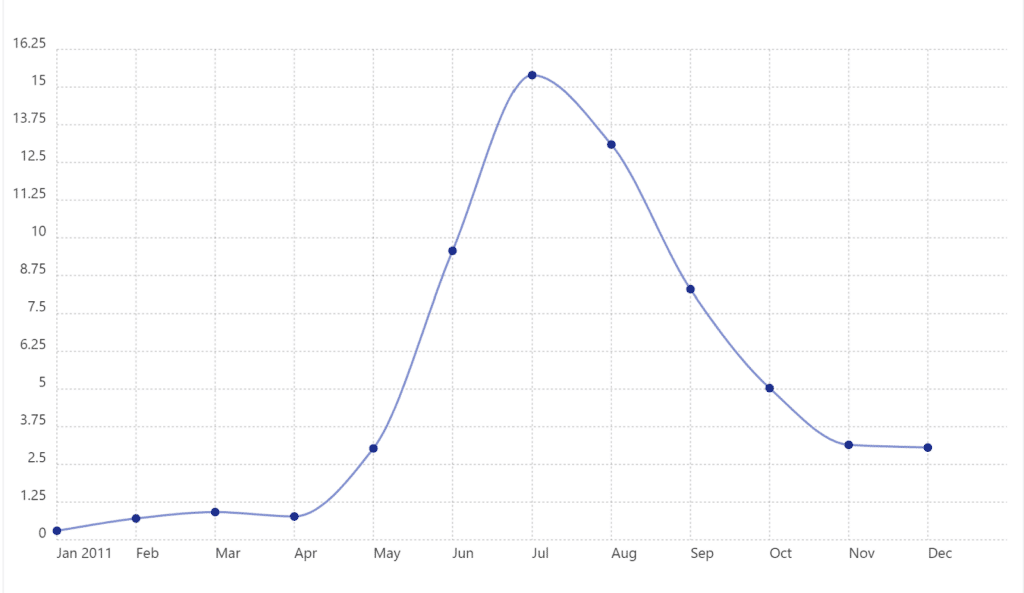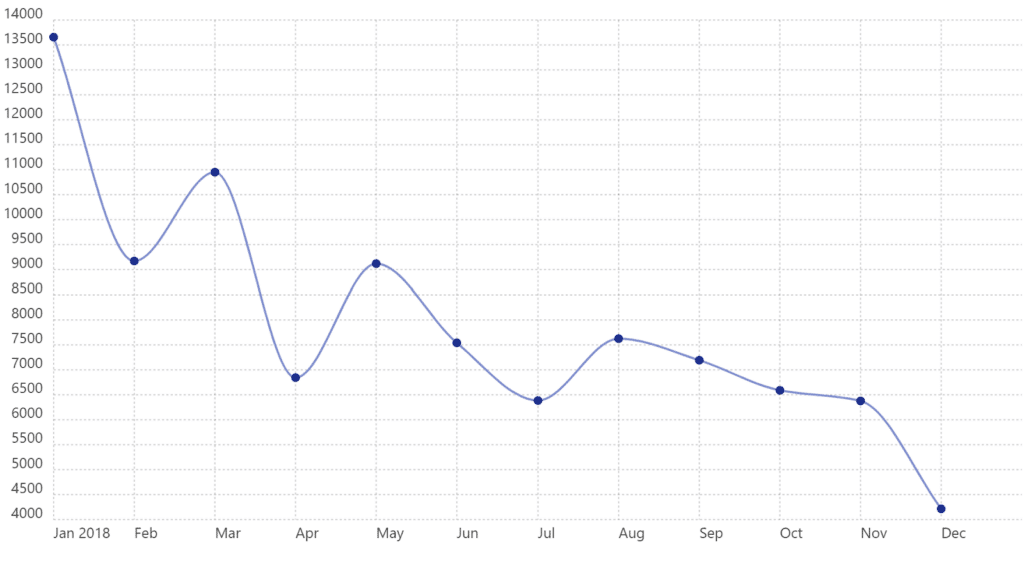What are crypto bubbles and how do they work? Discover their intricacies and explore their history, red flags, and recovery strategies.
The crypto market appears to be on the verge of new highs once again, with Bitcoin (BTC) recently breaking above the $64,000 level for the first time since 2021. But these highs are often temporary, leaving experts and investors grappling with pressing questions. Question: Are any cryptocurrencies destined for a bubble burst?
While some argue for the resilience of cryptocurrencies, others warn that a crypto collapse is imminent.
In this article, we dig into the meaning of the term “crypto bubble,” dissect its structure, explore similarities to traditional financial bubbles, and offer smart strategies for investors navigating these uncertain waters. .
What is a crypto bubble?
A crypto bubble refers to a frenzied increase in the price of a virtual currency, largely driven by hype and speculation, far exceeding its original value.
Unlike traditional assets, most cryptocurrencies lack tangible assets or revenue streams, making their valuations speculative endeavors susceptible to market sentiment and hype.
Much like the dot-com bubble of the late 1990s and the housing bubble of 2008, crypto bubbles lure investors with promises of astronomical returns that can ultimately lead to a rapid and catastrophic collapse. there is.
It's hard to ignore the similarities between crypto bubbles and their traditional counterparts. Both are characterized by frenzy and euphoria, pushing prices to dizzying highs, fueled by fear of missing out (FOMO) and speculative frenzy.
The lack of clear valuation metrics and the proliferation of new investment products often exacerbate market volatility, mirroring patterns seen in past financial bubbles.
How do crypto bubbles work?
Below is how a typical crypto bubble works.
Initial promotion and implementation: A new cryptocurrency, technology, or blockchain project attracts attention because of its potential usefulness, innovative features, or its potential to disrupt an existing industry. This often gets early adopters and enthusiasts on board with the idea, sparking an initial spike in interest and investment.
Speculative investment: As more people realize the potential for higher returns, speculative investors enter the market in hopes of profiting from rising prices. This influx of investment further increases demand and prices, creating a positive feedback loop.
Media attention and FOMO: As prices continue to rise, influencers on mainstream media and social media platforms have begun covering and promoting the crypto boom, attracting even more investors. Fear of missing out leads people to invest hastily without fully understanding the technology and the risks involved.
Irrational enthusiasm: Prices can then soar to unsustainable levels, often far exceeding the actual value or utility of the underlying asset. Here, greed can take over and investors may ignore fundamental analysis in pursuit of short-term profits.
Peak and correction: Eventually, the bubble will reach its peak when purchasing pressure subsides or negative news emerges. At this point, some early investors may start selling their holdings for a profit, which could cause a selloff. When prices plummet, panic selling occurs, making the decline even worse.
bursting the bubble: A bubble bursts when prices collapse dramatically and a significant portion of investors' wealth disappears. It can be caused by a variety of factors, including regulatory crackdowns, security breaches, technical flaws, or simply a loss of market confidence.
Collection and consolidation: After a bubble bursts, the market goes through a period of consolidation and prices typically stabilize at a lower level. Surviving projects with strong fundamentals may eventually recover and continue to grow, while weak or fraudulent projects may fade away.
Examples of past virtual currency bubbles
Cryptocurrency bubbles have had an interesting history since the introduction of Bitcoin in 2009, and Bitcoin has gone through many boom and bust cycles. Market speculation, technological advances, and regulatory influences often drove these fluctuations.
The first notable cryptocurrency bubble occurred in the early days of Bitcoin in 2011. From April to June of that year, the price of the cryptocurrency soared from a few cents to about $30. This attracted enthusiastic investment and media attention. However, the cryptocurrency bubble burst and the price of Bitcoin plummeted to single digits, causing early investors to suffer huge losses.

Another example is the infamous Bitcoin bubble of 2017, which is etched in the memory of many investors. The price of BTC soared to nearly $20,000 at the end of 2017, but plummeted to around $3,000 within a year.
Around the same time, the cryptocurrency industry also experienced an Initial Coin Offering (ICO) bubble, with many cryptocurrencies being introduced through ICOs, often without tangible products or services. Many of these projects turned out to be scams, which inevitably led to the collapse of cryptocurrencies, resulting in huge losses for those who took advantage of the hype.

Similarly, the altcoin bubble of early 2018 saw prices of alternative cryptocurrencies reach all-time highs, largely due to hype. However, by December 2018, many companies had lost almost all of their market value, again inflicting heavy losses on investors.
Non-fungible tokens (NFTs) gained widespread attention in 2021, with some selling for millions of dollars. However, the NFT bubble burst in 2022, and trading volume decreased significantly.
In the same year that NFTs came into the spotlight, Bitcoin went through another phase that many market observers call a bubble, undergoing a major correction and soaring to an all-time high of over $68,000.
Crypto bubble warning signs
Detecting crypto bubbles is not an exact science, but there are clues to look out for.
One obvious sign is a sudden jump in prices over a short period of time. Imagine Ripple (XRP) or Solana (SOL) doubling or even tripling in value in just a few days or weeks. Such rapid growth often indicates the emergence of a bubble.
Another red flag is hype. Bubbles tend to expand as public interest increases, and inexperienced investors rush in in pursuit of quick profits. When a cryptocurrency suddenly dominates social media feeds and headlines with lightning-fast price increases, it is often a red flag of a potential bubble.
Below are other key financial indicators to watch that could indicate we're in the midst of a crypto bubble ready to burst.
volatility: Beware of wild price fluctuations that occur in a short period of time. Such extreme fluctuations suggest speculative trading rather than a stable investment strategy.
high trading volume: If you see a spike in trading activity along with large buy or sell orders, it may indicate that emotional rather than rational decisions are moving the market.
Market capitalization: If the total market value of cryptocurrencies spikes beyond what seems realistic based on adoption and utility, that's a sign that things could get heated.
index of fear and greed: Extreme readings of sentiment indicators such as the Fear and Greed Index may indicate irrational market behavior caused by extreme optimism or pessimism.
Increase in margin trading: Increased levels of margin trading and leverage in cryptocurrency markets can amplify gains and losses and indicate increased speculative activity.
Prepare for burst
As crypto bubbles come and go, prudent strategy is paramount for investors looking to weather the storm. Here are some strategies investors can follow that may help them survive the bursting of a crypto bubble relatively unscathed.
reduce exposure: Some experts advise investors to consider selling some of their crypto holdings if they see warning signs of a bubble forming, as explained above. This helps reduce potential losses and can even generate profits if done strategically.
monitor the market: Get the latest information on cryptocurrency news and market trends. Staying on top of industry trends will help you make informed decisions and ride out bubbles more easily.
Seek expert advice: Consider consulting an experienced trader or financial advisor. Their insights could provide valuable guidance on how to navigate the rough waters of the crypto market.
think long term: The bubble may be temporary, but the potential of cryptocurrencies is long-lasting. Adopting a long-term mindset can help you weather the storm and maybe even come out stronger on the other side.
Execution of stop loss orders: Consider setting up a stop-loss order that automatically sells the asset if the price falls below a certain threshold. These help protect your investments during market fluctuations.
maintain discipline: Stick to your investment strategy and avoid making impulsive decisions based on emotions or short-term fluctuations. Staying disciplined is key to weathering the storm of a cryptocurrency bubble.
Can investors profit from crypto bubbles?
While the lure of quick profits during a crypto bubble is tempting, it is essential to tread carefully. Cryptocurrency bubbles present significant risks, including the potential for large losses.
Crypto bubbles are a mix of speculation, hype, and human psychology. These are emblematic of the volatile nature of the cryptocurrency market, which is characterized by rapid price fluctuations and speculative frenzy.
However, it is important to note that while crypto bubbles can cause significant financial losses for investors, they can also serve as a learning experience for the market as a whole. They emphasize the importance of conducting thorough due diligence, understanding the underlying technology, and investing with a long-term perspective rather than succumbing to short-term speculation.
It also serves as a reminder that it is essential to approach crypto investments carefully, with knowledge and a firm commitment to sound investment principles.
What are the signs of a crypto bubble?
Identifying the signs of a potential crypto bubble can be complex, as various factors influence market dynamics. However, some common indicators include rapid and unsustainable price increases across multiple cryptocurrencies, heightened speculative activity due to fear of missing out (FOMO), and an emphasis on quick profits. These include excessive media coverage, a disconnect between valuations and the underlying fundamentals of the project.
What are the main risks of a crypto bubble?
Cryptocurrency bubbles pose several risks to investors and the broader market. One significant risk is the potential for significant financial losses if prices reach unsustainable levels and then inevitably correct. Additionally, bubbles can lead to increased regulatory scrutiny and intervention, which can impact market liquidity and investor confidence. Additionally, bubbles can foster fraud and fraud as opportunists use the hype to promote questionable projects.
Is Bitcoin a bubble?
Whether Bitcoin is in a bubble is subject to interpretation and debate. Like other cryptocurrencies, Bitcoin has experienced rapid price increases followed by significant corrections, which some observers have characterized as bubble-like movements. However, some argue that Bitcoin's long-term value proposition as a decentralized store of value and medium of exchange justifies its current price level.
Disclosure: This article does not represent investment advice. The content and materials published on this page are for educational purposes only.


